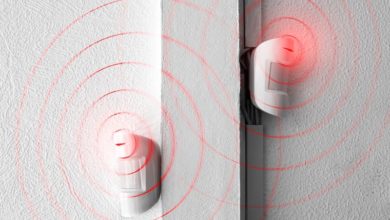Understanding Channels in Security Camera Systems: A Complete Guide
In home and commercial security, the term ‘channel’ holds significant importance. A ‘channel’ in security camera systems refers to each individual stream of video managed by the system. It’s akin to a slot on a Network Video Recorder (NVR) or Digital Video Recorder (DVR) where each camera’s video feed is connected and recorded. Understanding this terminology is essential for planning and optimizing your security setup.
Understanding the Basics: DVRs and NVRs
Security systems are typically powered by two main types of recorders: Digital Video Recorders (DVRs) and Network Video Recorders (NVRs). In these systems, the security camera’s cable connects to the back of the recorder, with each connection point representing one ‘channel’. Imagine these channels as individual TV stations that you can tune into; for instance, a 16-channel DVR can accommodate up to 16 different camera feeds.
Commonly, security systems are available in configurations of 4, 8, 16, or 32 channels. While it’s possible to find systems with a different number of channels, these are less common. Selecting a system with the appropriate number of channels for your needs is crucial, as overcapacity can lead to unnecessary costs, whereas too few channels might limit future expansion.
Connecting Your Security Cameras
How you connect a camera to your system depends on whether you’re using analog or network cameras. For analog systems, coaxial cables are typically used to link each camera to a DVR, establishing a secure channel. Meanwhile, network cameras, which are used with NVR systems, connect over the internet or through Ethernet cabling, offering a different method of stream management and recording.
Expanding Your Security Camera System
It’s important to note that the number of channels your system can handle is not always equal to the number of cameras included. Many DVRs and NVRs come with additional channels to allow for system growth. This aspect is crucial for planning long-term security needs. While analog systems can be limited in expansion capabilities, digital systems, particularly those running on advanced network infrastructure, offer more flexibility but may require professional installation for upgrades.
Aligning Your System with Future Security Needs
When choosing a security camera system, consider the potential for future expansion. Opt for a system that not only meets your current needs but also has additional channels for adding more cameras. Remember, the more channels your system supports, the more comprehensive your surveillance coverage can be.
By understanding the function and importance of channels in security camera systems, you can make informed decisions that ensure robust protection for your property. Whether upgrading an existing setup or installing a new one, consider channel capacity as a key factor in your security strategy.





